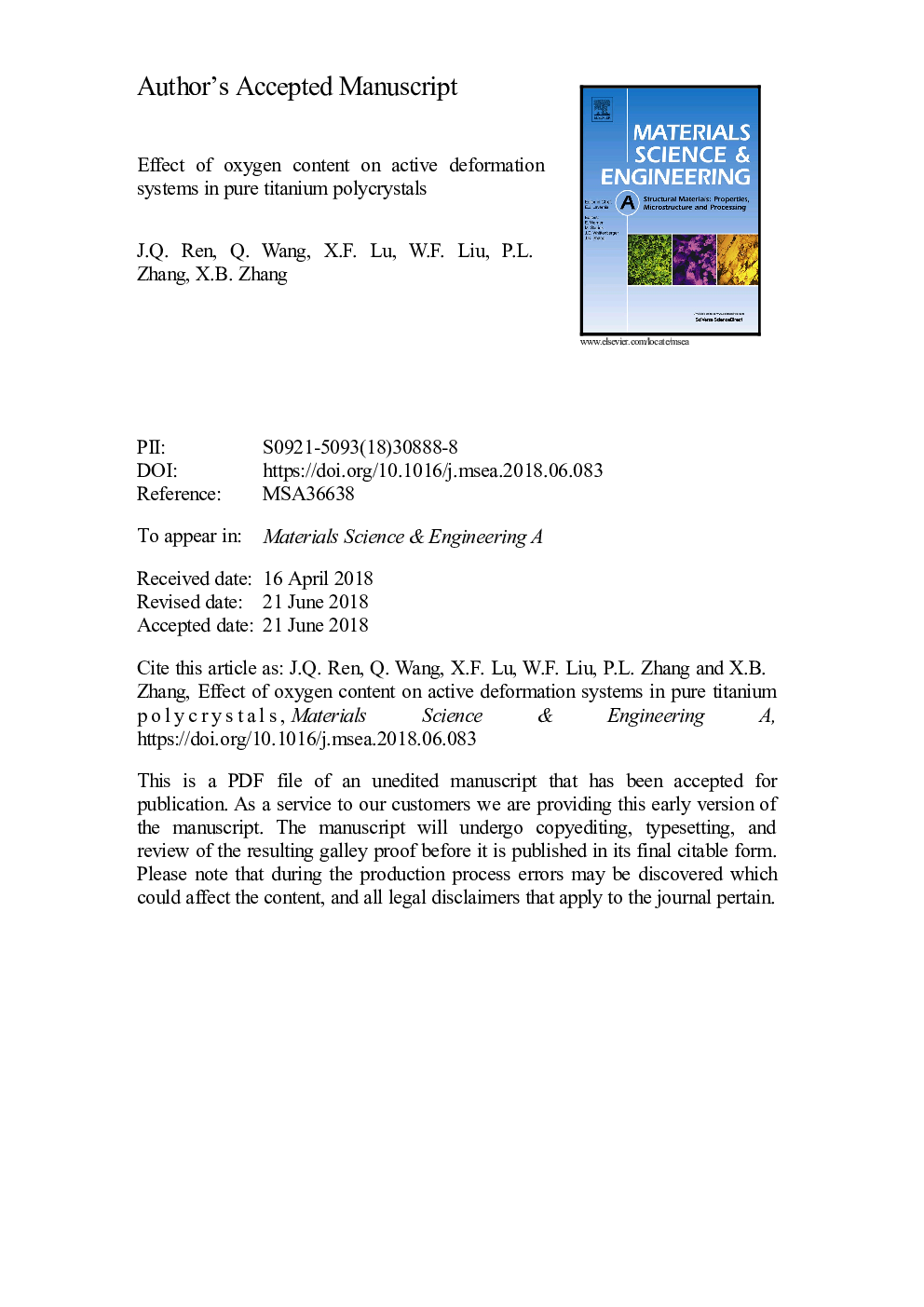| Article ID | Journal | Published Year | Pages | File Type |
|---|---|---|---|---|
| 7971794 | Materials Science and Engineering: A | 2018 | 32 Pages |
Abstract
The Ti-0.1â¯wt% O and Ti-0.3â¯wt% O polycrystals were compressed along the extrusion direction and the incidence of different deformation modes were evaluated by electron backscattered diffraction (EBSD)-assisted slip trace analysis. It was found that a transition from single prismatic slip in Ti-0.1O to double prismatic slip or multiple slip in Ti-0.3O polycrystals dominated flow was observed. The reason for such transition was associated with the decreasing of CRSSpyramidal/CRSSprismatic ratio and the increasing of c/a ratio as the oxygen content increasing. Meanwhile, the deformation twins were less observed in Ti-0.3O than that in Ti-0.1O polycrystals, and all the characterized deformation twins were {101Ì
2}ã1Ì
011ã. Interestingly, because the influence of the grain orientation and high local stress concentrations, {101Ì
2}ã1Ì
011ã twins with lower Schmid factor (SF) than that of prismatic slip were often activated in Ti-0.1O polycrystals. As the oxygen content increases, the interaction between the solute oxygen and the core of crew dislocation was enhanced, and the mobility of the dislocation becomes difficult. As a consequence, the compressive yield stress of Ti-0.3O was about 2.5 times that of Ti-0.1O polycrystals.
Related Topics
Physical Sciences and Engineering
Materials Science
Materials Science (General)
Authors
J.Q. Ren, Q. Wang, X.F. Lu, W.F. Liu, P.L. Zhang, X.B. Zhang,
